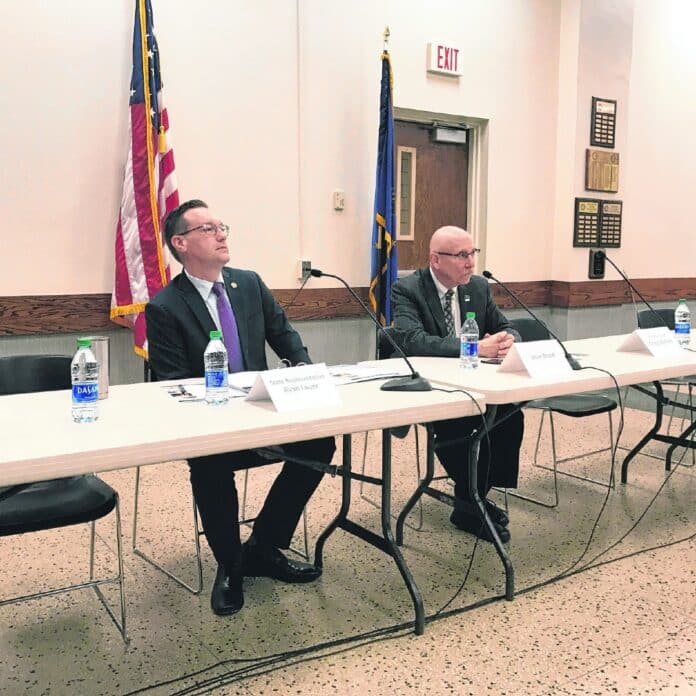
State Rep. Ryan Lauer fielded questions about education funding as the sole legislator at the final Third House session at Donner Center early Monday morning.
With the legislative session expected to adjourn on Wednesday, there were some regulars missing from the legislative panel, including Sen. Greg Walker, R-Columbus; Sen. Eric Koch, R-Bedford and Rep. Jim Lucas, R-Seymour.
More than 60 people attended Monday’s session, with many questions focusing on education.
Audience member Stephanie Carmer brought up the May 5 referendum in Bartholomew County that, if passed, will generate around $7.8 million per year in additional property tax revenue to fund teacher and support staff salary increases and student safety.
When Carmer asked how money from a public school referendum can be diverted into private or charter schools, Lauer said the bill only gives communities an option to share those funds with charter schools.
“Charter schools are public schools, too,” Lauer said.
But the representative emphasized there is no language in the measure that would allow sharing public funds with private schools.
After Lauer stated that 63% of Indiana’s budget already goes to education, Bartholomew Consolidated School superintendent Jim Roberts said BCSC has received an average 1.77% increase in new funding annually over the last eight years. Almost all of that money is absorbed by health insurance increases, Roberts said.
One of the best things state lawmakers achieved this year was to decouple teacher performance from student test scores, Lauer said.
In answer to a question from Chuck Doup, the lawmaker also said teacher evaluations should be handled at the local level, as long as the state receives assurances the school district has a solid plan with straightforward ways of measuring performance.
“That goes back to local control,” Lauer said. “Let the schools decide how to keep and grow their employees.”
Another bill Lauer described as pro-education is HB 1003, which allows the State Board of Education and local schools to decide for themselves which teacher training workshops and seminars are really necessary.
He also praised a measure already signed by Indiana Gov. Eric Holcomb that will save Hoosiers more than $130 million by using cash to pay for several capital projects. ne includes a $38 million investment into the Ivy Tech Columbus campus to build a new main campus building to replace Poling Hall.
Another priority for state lawmakers this year were to find ways to drive down the price of health care, Lauer said.
Lauer did have one of his own bills regarding medical care make its way through the General Assembly. HB 1129 requires that every baby born in Indiana be tested for adrenoleukodystrophy (ALD), a genetic brain disorder that affects 1 in 18,000 people.
Other bills Lauer mentioned were HB 1004 would stop surprise out-of-network billing on hospital bills, while HB 1005 requires requiring “good faith cost estimates” in advance.
Another bill that would create an all-payer claims database that Hoosiers could use to shop around for medical procedures died in the House. However, Lauer said parts of that measure might reappear in amendments to other bills in the next few days.
JoAnne Flohr asked Lauer why he voted against a state bill that would raise the age to buy smoking products to 21. In response, the lawmaker said the federal government already did that late last year.
But in principle, Lauer said Hoosiers can be sent to war or vote at age 18.
“Where is that line drawn that says you are an adult?” Lauer asked. “That you have the freedom to make decisions for yourself, even if they are poor decisions?”
Lauer said he also objected to language in the measure that would hurt retailers by setting a mandatory distance between their stores and public schools.




